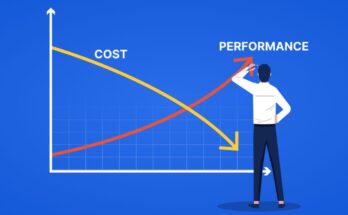Since 2004, annual labor productivity growth in the United States has averaged barely 1.3 percent, sparking a discussion between optimists and pessimists over what this means. Slow development, according to pessimists like Robert Gordon (2012), is the new normal. Optimists, such as McAfee and Brynjolfsson (2016), see robots and artificial intelligence as having the potential to boost productivity.
Despite their differences in future developments, both sides agree that the use of information and communications technology-fueled significant growth in the late 1990s and early 2000s (ICT). The retail industry is frequently referenced as “Exhibit A” in this debate.
The relevance of technology like scanning and computerized inventory management is emphasized in most stories of the retail revolution. However, there is little or no large-scale empirical proof of these technologies’ impact. Basker and Simcoe’s latest study addresses that void. It studies the buy barcodes online dissemination and economic implications using historical data on Universal Product Code (UPC) registrations.
Diffusion of UPC
In 1974, the first barcode scanner was installed in a Marsh Supermarket in Troy, Ohio. The system was designed with food retailing in mind, but the combination of barcodes printed on packages by manufacturers and scanners used in-store by merchants allowed for automated checkout and inventory tracking in various retail sectors.
A barcode’s initial six digits serve as a unique corporate identifier. We upload the name and address of any company that applied for an upc ean barcode symbol to the Census Bureau’s secret Business Register. As a result, we will be able to give an economy-wide perspective of the system’s dissemination and impact.
Stores can only utilize barcodes if they have scanners that can read them, and scanners can only read barcodes if the product packaging has barcodes to scan. Because the industry as a whole gain from the adoption of the new standard, each side – retailer and supplier – likes to wait for the other to move first, this is a typical ‘two-sided network’ dilemma. Large retailers, distributors, and producers in the food business collaborated to establish the standard. Pharmaceutical companies, which sell many of their goods through the same channels as food companies, jumped on board right once. By the end of the 1970s, UPS-adopting enterprises accounted for 60% of industry employment in the US food and medicine industries.
What was going on upstream?
What happened to manufacturers and distributors who embraced the UPC buy barcodes is also investigated. We are interested in two outcomes: company size (as measured by employment) and product innovation (as measured by trademark registrations). We utilize a matched sample difference-in-differences strategy to evaluate the consequences of adoption because the choice to adopt the UPC was not made at random. Our estimates compare the change in outcomes after UPC adoption to the change in outcomes in a sample of non-adopting enterprises over the same period. Non-adopting businesses were the same size and had the same pre-adoption growth rates.
We discovered that employment grew by roughly 10% in the year after a manufacturer’s registration for a UPC, before stabilizing at the new, higher level. The rise in employment as a result of upc ean barcode registration was accompanied by an increase in the number of rivals who had also registered. This is consistent with network effects being present.




